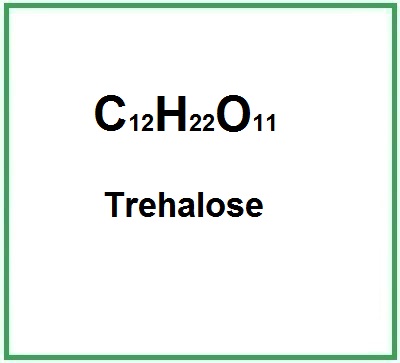![]() Trehalose
Trehalose
Rating : 7.4
| Evaluation | N. Experts | Evaluation | N. Experts |
|---|---|---|---|
| 1 | 6 | ||
| 2 | 7 | ||
| 3 | 8 | ||
| 4 | 9 | ||
| 5 | 10 |
Pros:
Antifungal (1)17 pts from Whiz35
| Sign up to vote this object, vote his reviews and to contribute to Tiiips.Evaluate | Where is this found? |
| "Trehalose studies" about Trehalose by Whiz35 (11840 pt) | 2022-Sep-16 12:39 |
| Read the full Tiiip | (Send your comment) |
Trehalose has been studied and proven to have a beneficial effect on mammalian cells, an inhibitory effect on cell proliferation and a cytoprotective effect on cells exposed to UVB radiation (1).
Trehalose is a ubiquitous molecule found in lower and higher forms of life, but not in mammals. Until about 40 years ago, Trehalose was considered a storage molecule that promoted the release of glucose to perform cellular functions. This perception has recently changed substantially. The role of Trehalose has expanded, and this molecule is now being used in a variety of situations. Trehalose can be synthesised as a stress-sensitive factor when cells are exposed to environmental stresses such as heat, cold, oxidation, desiccation, and so on. When single-celled organisms are exposed to stress, they adapt by synthesising huge amounts of trehalose, which helps them maintain cellular integrity. In recent years, trehalose has proven useful for cryopreservation of sperm and stem cells and in the development of a highly reliable organ preservation solution (2).
Trehalose has suppressive effects on several pathological events, including vasospasm, inflammatory responses and lipid peroxidation (3) and, together with Bicaludamide, a new approach to the study of spinal and bulbar muscular atrophy (4).
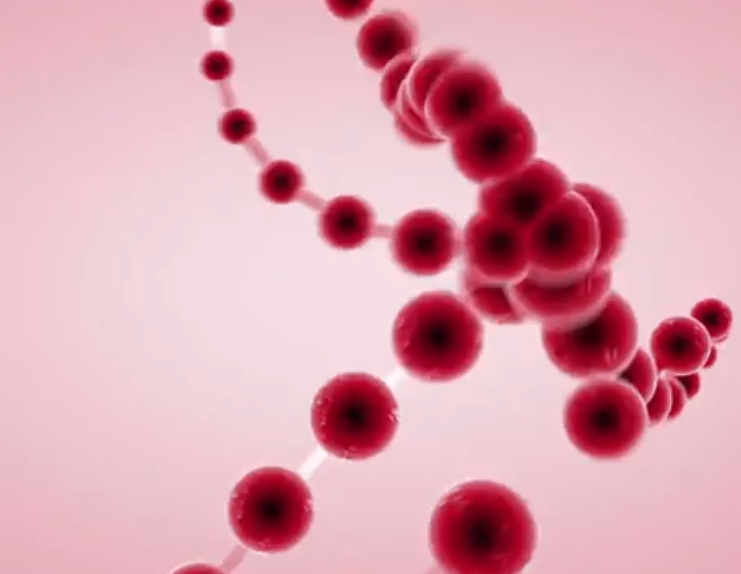
In a growing immunocompromised population that is prone to invasive fungal infections, Trehalose possesses several important characteristics for the development of antifungal agents. First, it appears to have fungicidal characteristics and second, it is broad-spectrum and relevant against both ascomycetes and basidiomycetes species. Finally, it is not found in mammals so theoretically specific inhibitors of trehalose and its enzymes in fungi should be relatively non-toxic to mammals (5).
Mo F, Zhou X, Yang M, Chen L, Tang Z, Wang C, Cui Y. Trehalose Attenuates Oxidative Stress and Endoplasmic Reticulum Stress-Mediated Apoptosis in IPEC-J2 Cells Subjected to Heat Stress. Animals (Basel). 2022 Aug 16;12(16):2093. doi: 10.3390/ani12162093.
Abstract. This study was carried out to investigate the effects of trehalose (Tre) on antioxidant capacity, endoplasmic reticulum stress (ERS) response and apoptosis of heat-stressed intestinal porcine epithelial cells (IPEC-J2). IPEC-J2 cells were cultured at 37 °C until the end of the experiment (control, CON); exposed to heat stress for 2 h (43 °C, HS); or pretreated with 0.1, 1, 5, 10, and 15 mM trehalose at 37 °C for 4 h prior to heat stress exposure for 2 h. The optimum level of trehalose for protecting against HS-induced cell injuries was determined to be 10 mM, as evidenced by the highest cellular viability and lowest malondialdehyde (MDA) content and lactate dehydrogenase (LDH) activity. Based on these, IPEC-J2 cells were divided into three groups: the first group was cultured at 37 °C until the end of the experiment (control, CON); the second group was exposed to heat stress for 2 h (43 °C, HS); the third group was pretreated with 10 mM trehalose for 4 h at 37 °C prior to heat stress exposure for 2 h (Tre + HS). The reactive oxygen species (ROS) content, superoxide dismutase (SOD) activity, mitochondrial membrane potential (MMP) changes, and expressions of the manganese superoxide dismutase (SOD2), ERS and apoptosis-related proteins were determined. Compared to the CON group, HS significantly increased ROS generation (p < 0.01), decreased SOD activity (p < 0.05), and downregulated protein expression of SOD2 (p < 0.01). Compared to the HS group, Tre supplementation reduced ROS levels and increased SOD activity and SOD2 expression to the levels that were comparable to the control (p < 0.05). The HS-induced ERS response was evidenced by the increased protein expressions of glucose-regulated protein 78 (GRP78) (p < 0.01), eukaryotic translation initiation factor 2α (p-eif2α) (p < 0.01), transcription activator 4 (ATF4) (p < 0.01), and the protein expression of C/EBP homologous protein (CHOP) (p < 0.01), which were the four hallmarks of ERS. The Tre + HS group showed lower expressions of GRP78 (p < 0.01), p-eif2α (p < 0.01), ATF4 (p < 0.01), and CHOP (p < 0.01) than that of the HS group. Tre pretreatment attenuated HS-induced mitochondrial apoptosis in IPEC-J2 cells, demonstrated by the increased MMP and decreased proapoptotic proteins active caspase 3, Bax, and cytochrome c (Cyt c). Taken together, trehalose can protect against HS-induced oxidative damage and endoplasmic reticulum stress-mediated apoptosis in IPEC-J2 cells. These data may provide a nutritional strategy for alleviating heat stress in pig production.
Vinciguerra D, Gelb MB, Maynard HD. Synthesis and Application of Trehalose Materials. JACS Au. 2022 Jul 6;2(7):1561-1587. doi: 10.1021/jacsau.2c00309.
Abstract. Trehalose is a naturally occurring, nonreducing disaccharide that is widely used in the biopharmaceutical, food, and cosmetic industries due to its stabilizing and cryoprotective properties. Over the years, scientists have developed methodologies to synthesize linear polymers with trehalose units either in the polymer backbone or as pendant groups. These macromolecules provide unique properties and characteristics, which often outperform trehalose itself. Additionally, numerous reports have focused on the synthesis and formulation of materials based on trehalose, such as nanoparticles, hydrogels, and thermoset networks. Among many applications, these polymers and materials have been used as protein stabilizers, as gene delivery systems, and to prevent amyloid aggregate formation. In this Perspective, recent developments in the synthesis and application of trehalose-based linear polymers, hydrogels, and nanomaterials are discussed, with a focus on utilization in the biomedical field. © 2022 The Authors. Published by American Chemical Society.
References____________________________________________________________________________
(1) Chen X, Li M, Li L, Xu S, Huang D, Ju M, Huang J, Chen K, Gu H. Trehalose, sucrose and raffinose are novel activators of autophagy in human keratinocytes through an mTOR-independent pathway. Sci Rep. 2016 Jun 22;6:28423. doi: 10.1038/srep28423.
(2) Jain NK, Roy I. Effect of trehalose on protein structure. Protein Sci. 2009 Jan;18(1):24-36. doi: 10.1002/pro.3.
(3) Echigo R, Shimohata N, Karatsu K, Yano F, Kayasuga-Kariya Y, Fujisawa A, Ohto T, Kita Y, Nakamura M, Suzuki S, Mochizuki M, Shimizu T, Chung UI, Sasaki N. Trehalose treatment suppresses inflammation, oxidative stress, and vasospasm induced by experimental subarachnoid hemorrhage. J Transl Med. 2012 Apr 30;10:80. doi: 10.1186/1479-5876-10-80.
(4) Giorgetti E, Rusmini P, Crippa V, Cristofani R, Boncoraglio A, Cicardi ME, Galbiati M, Poletti A. Synergic prodegradative activity of Bicalutamide and trehalose on the mutant androgen receptor responsible for spinal and bulbar muscular atrophy. Hum Mol Genet. 2015 Jan 1;24(1):64-75. doi: 10.1093/hmg/ddu419.
(5) Perfect JR, Tenor JL, Miao Y, Brennan RG. Trehalose pathway as an antifungal target. Virulence. 2017 Feb 17;8(2):143-149. doi: 10.1080/21505594.2016.1195529
| Sign up to vote this object, vote his reviews and to contribute to Tiiips.EvaluateClose | (0 comments) |
| "Descrizione" about Trehalose Review Consensus 17 by Whiz35 (11840 pt) | 2022-Dec-31 19:20 |
| Read the full Tiiip | (Send your comment) |
Trehalose is a natural sugar consisting of two glucose molecules, a non-reducing disaccharide in which the two glucose molecules are linked together in an α,α-1,1-glycosidic bond. Discovered in 1832 by the German pharmacist Heinrich August Ludwig Wiggers in rye. The name trehalose was given by the French chemist Marcellin Pierre Eugène Berthelot in 1859 i an experiment on the non-reducing disaccharide Trehala manna.
It is found in all major groups of organisms except vertebrates with the function of transporting sugar and protecting against stress. Trehalose is present in Selaginella lepidophylla (Hook. & Grev.) and other primitive plants as well as in algae, mosses and ferns (Elbein , 1974; Kandler and Hopf, 1980). It is both a negative feedback regulator of sucrose levels, in a mechanism of optimal maintenance of sucrose levels, and functionally comparable to the insulin-glucagon system for regulating blood glucose levels (1).
It is an antioxidant widely distributed in Nature and has been isolated from certain species of bacteria, fungi, invertebrates and plants, which are capable of surviving in a dehydrated state for months or years and subsequently being revived after a few hours of being in contact with water. This disaccharide has many biotechnological applications, as its physicochemical properties allow it to be used to preserve foods, enzymes, vaccines, cells etc., in a dehydrated state at room temperature. One of the most striking findings a decade ago was the discovery of the genes involved in trehalose biosynthesis, present in a great number of organisms that do not accumulate trehalose to significant levels. In plants, this disaccharide has diverse functions and plays an essential role in various stages of development, for example in the formation of the embryo and in flowering. Trehalose also appears to be involved in the regulation of carbon metabolism and photosynthesis. Recently it has been discovered that this sugar plays an important role in plant-microorganism interactions (2).
It appears in the form of a white powder.

What it is used for and where
Synthetic, organic intermediate material.
Food
It is an important molecule for food applications. These applications include use as a food additive to increase sweetness (45% more than sugar) and promote preservation in freeze-drying. It has a high water-holding capacity, prevents starch ageing and protein denaturation. Maintains the stability and tightness of plant and meat tissues It is incorporated in dry and processed foods, confectionery, baked goods, ice cream, condiments.

Medical
Trehalose is also included in antibody preparations for stabilisation during freezing or drying. However, despite all its uses, the direct physiological roles of trehalose remain unclear (3).
Used in cryopreservation of human cells, biopharmaceutical preservation of labile protein drugs.
Cosmetics
In cosmetic products, it is used as a moisturiser and antioxidant to maintain cell viability by protecting epidermal cells and imparting elasticity to the skin. It also has the function of protecting against oxygen radical damage, protecting proteins and membranes, and regulating the growth of the structural component of the bacterial cell wall.
Flavoring agent. The purpose of this ingredient is to modify the solution to add flavour. Natural flavouring extracts are rather expensive, so the cosmetic and pharmaceutical industries resort to synthesised substances that have sensory characteristics mostly similar to natural flavourings or are naturally equivalent. This ingredient is isolated through chemical processes or is synthesised from chemicals.
Skin conditioning agent - Humectant. Humectants are hygroscopic substances used to minimise water loss in the skin and to prevent it from drying out by facilitating faster and greater absorption of water into the stratum corneum of the epidermis. The epidermis is the most superficial of the three layers that make up the human skin (epidermis, dermis and hypodermis) and is the layer that maintains hydration in all three layers. In turn, the epidermis is composed of five layers: corneum, the most superficial, lucidum, granulosum, spinosum and basale. Humectants have the ability to retain in the stratum corneum the water they attract from the air and have the function of moisturising the skin. It is better to use them before emollients that are oil-based.
For more information:
Typical commercial product characteristics Trehalose
| Appearance | White powder |
| pH | 5.0~6.7 |
| Boiling Point | 675.4±55.0°C at 760 mmHg |
| Melting Point | 203° |
| Flash point | 362.3°C |
| Density | 1.8±0.1 g/cm3 |
| PSA | 189.53000 |
| LogP | -3.30 |
| Refraction Index | 1.652 |
| Vapor pressure | 0.0±4.7 mmHg at 25°C |
| Residue on ignition | ≤ 0.05% |
| Turbidity | ≤ 0.05% |
| Chromaticity | ≤ 0.100 |
| Loss on drying | ≤ 1.5% |
| Lead | ≤ 0.5 mg/kg |
| Arsenic | ≤ 0.5 mg/kg |
| Total microbial | ≤ 300 cfu/g |
| Molds and Yeasts | ≤ 100 cfu/g |
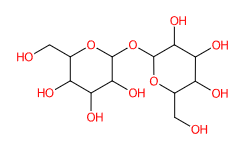 | 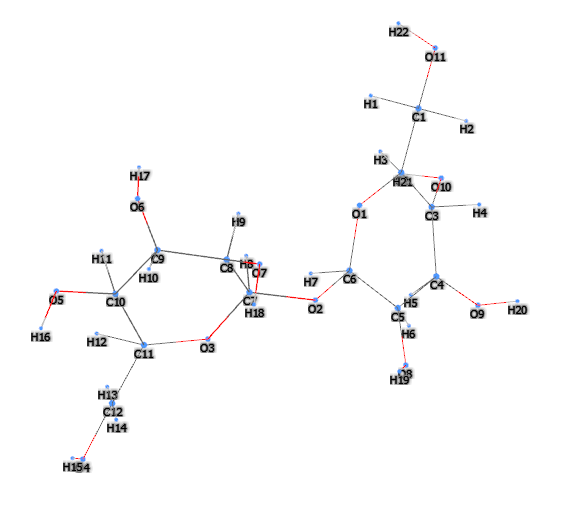 |
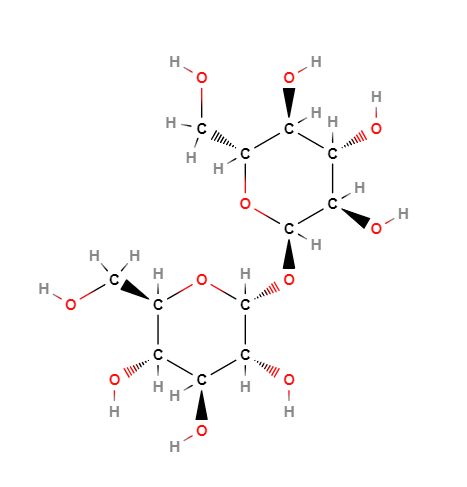 | 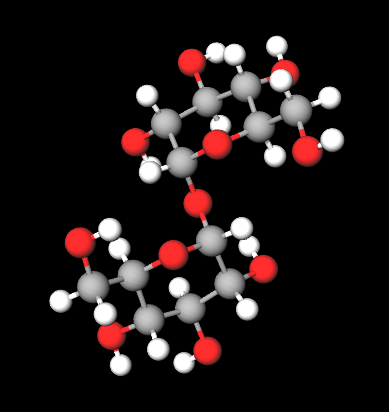 |
Price
500 mg $84.00
- Molecular Formula C12H22O11
- Molecular Weight 342.3
- Exact Mass 342.116211
- CAS 99-20-7 6138-23-4
- UNII B8WCK70T7I
- EC Number 202-739-6
- DSSTox Substance ID DTXSID3048102
- IUPAC (2R,3S,4S,5R,6R)-2-(hydroxymethyl)-6-[(2R,3R,4S,5S,6R)-3,4,5-trihydroxy-6-(hydroxymethyl)oxan-2-yl]oxyoxane-3,4,5-triol
- InChl=1S/C12H22O11/c13-1-3-5(15)7(17)9(19)11(21-3)23-12-10(20)8(18)6(16)4(2-14)22-12/h3-20H,1-2H2/t3-,4-,5-,6-,7+,8+,9-,10-,11-,12-/m1/s1
- InChl Key HDTRYLNUVZCQOY-LIZSDCNHSA-N
- SMILES C(C1C(C(C(C(O1)OC2C(C(C(C(O2)CO)O)O)O)O)O)O)O
- MDL number MFCD00071594 MFCD00006628
- PubChem Substance ID 329823329
- ChEBI 140775
- RTECS
- RXCUI 1311373
- FEMA 4600
- Beilstein 5322018
- NACRES NA.24
- NSC 2093
Synonyms :
- alpha.-D-glucopyranosyl
- alpha.-D-Glucopyranoside
- d-trehaloseanhydrous
- Ergot sugar
- D-Trehalose, 99%, anhydrous
- (2R,3R,4S,5S,6R,2'R,3'R,4'S,5'S,6'R)-2,2'-Oxybis[6-(hydroxymethyl)tetrahydro-2H-pyran-3,4,5-triol]
- (2R,3R,4S,5S,6R,2'R,3'R,4'S,5'S,6'R)-2,2'-Oxybis[6-(hydroxyméthyl)tétrahydro-2H-pyran-3,4,5-triol]
- (a-D-Glucosido)-a-D-glucoside
References__________________________________________________________________
(1) Figueroa CM, Lunn JE. A Tale of Two Sugars: Trehalose 6-Phosphate and Sucrose. Plant Physiol. 2016 Sep;172(1):7-27. doi: 10.1104/pp.16.00417.
(2) Gabriel Iturriaga, Ramón Suárez, Barbara Nova-Franco Trehalose Metabolism: From Osmoprotection to Signaling Int J Mol Sci. 2009 September; 10(9): 3793–3810. Published online 2009 September 1. doi: 10.3390/ijms10093793
(3) Gibney PA, Schieler A, Chen JC, Rabinowitz JD, Botstein D. Characterizing the in vivo role of trehalose in Saccharomyces cerevisiae using the AGT1 transporter. Proc Natl Acad Sci U S A. 2015 May 12;112(19):6116-21. doi: 10.1073/pnas.1506289112
| Sign up to vote this object, vote his reviews and to contribute to Tiiips.EvaluateClose | (0 comments) |
Read other Tiiips about this object in __Italiano (2)
Component type: Natural Main substances: Last update: 2016-08-14 09:32:15 | Chemical Risk: |


